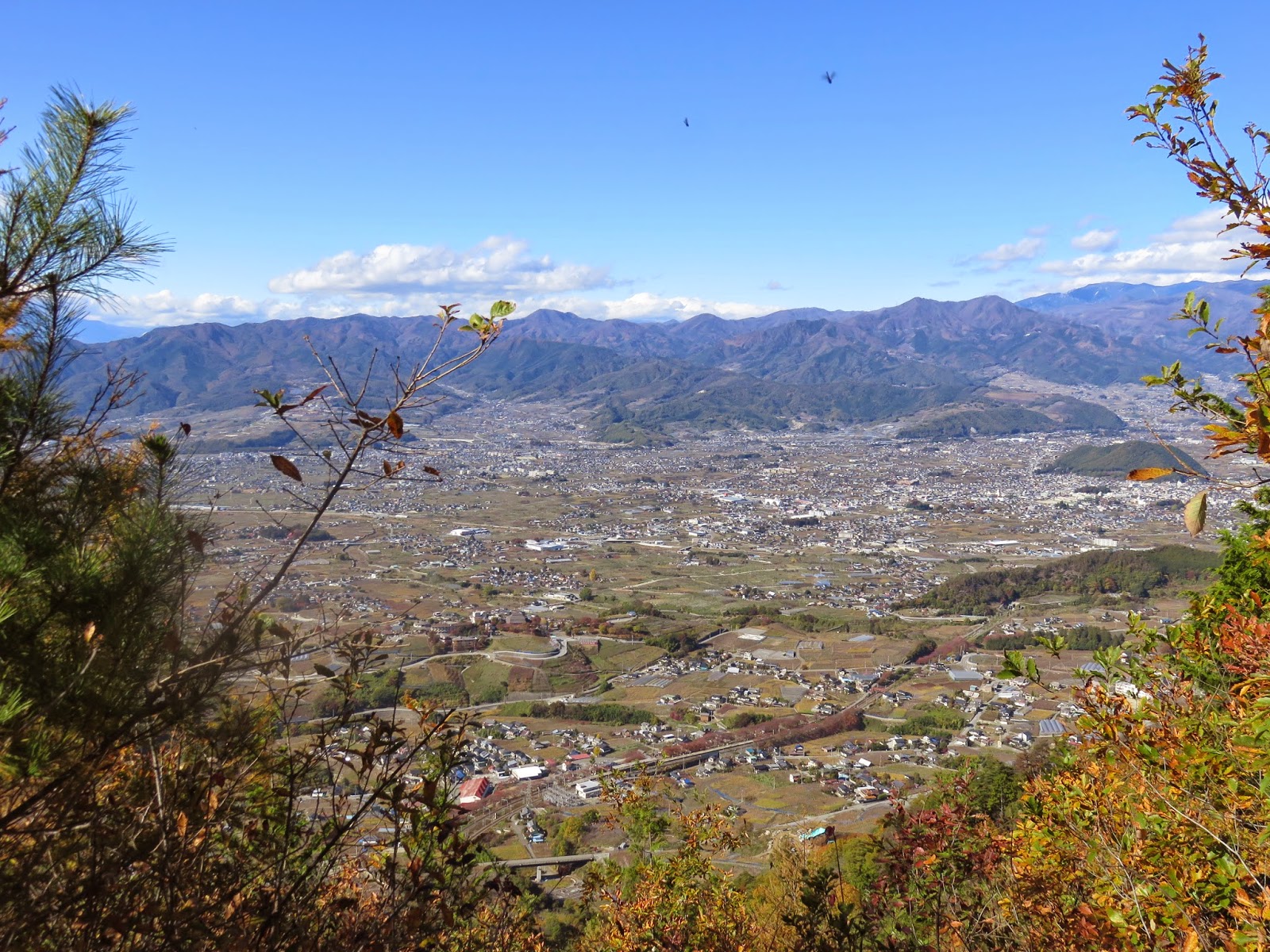When you
think of Japanese culture and industry, wine might not be the most
iconic piece of heritage that comes to mind. Consider, however,
Katsunuma (勝沼),
in Kōshū
(甲州),
Yamanashi Prefecture, just west of Tokyo. Look closely at those
buildings and fields.
The
large buildings are wineries and wine-related facilities, and the
fields are not rice paddies, but vineyards, producing Japan's most
celebrated Kōshu
variety of grapes. Katsunuma is the heart of Japanese wine
production, responsible for almost half the country's total wine
output, and if you believe the stories, this industry traces its
origins back almost 1300 years.
Kōshū
gets
its name from an abbreviation for Kai (甲斐),
the traditional province that became Yamanashi during the Meiji
period (1868-1912). It is a landlocked zone centred upon the Kōfu
Basin, which is ringed by towering mountains covered in forests.
These rise to the north and west into the Japanese Alps; give way to
the south to Mount Fuji; and extend east into the mountains of
Oku-Tama (Tokyo) and Chichibu (Saitama).
 |
| Looking west across the Kōfu Basin. The large road is National Route 20, which roughly follows the old Edo-period Kōshū Kaidō (甲州街道) highway discussed here. |
Katsunuma
sits on the eastern edge of this basin, and above it rises
1,120m-high Kōshū
Takaō-san
(甲州高尾山)
– not to be confused with
the
other Takaō-san
in Tokyo. What follows here is a hiking route that takes in Kōshū's
wine-making heritage, including a very old temple where it is said to
have first begun, then launches into the bright mixed forests and
breathtaking autumn ridges, where some more secretive shrines and
temples hide in the deep wilds. This route can be walked in 5-6
hours, but be prepared for a punishingly strenuous climb from the
temple to the Kōshū
Takaō-san
summit.
To
get there, take the JR
Chūō Line
west out of Tokyo: past Tachikawa, past Hachiōji, past Takao (where
you may have to change trains but on the same platform) and past
Ōtsuki – but not as far as Kōfu. Get off at Katsunuma
Budōkyō (勝沼ぶどう郷)
station (“Katsunuma grape district”), where this walk begins and
ends.








